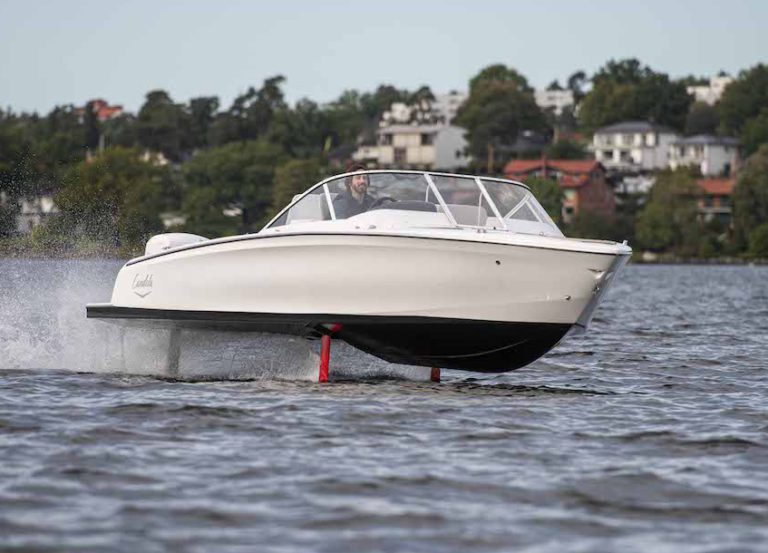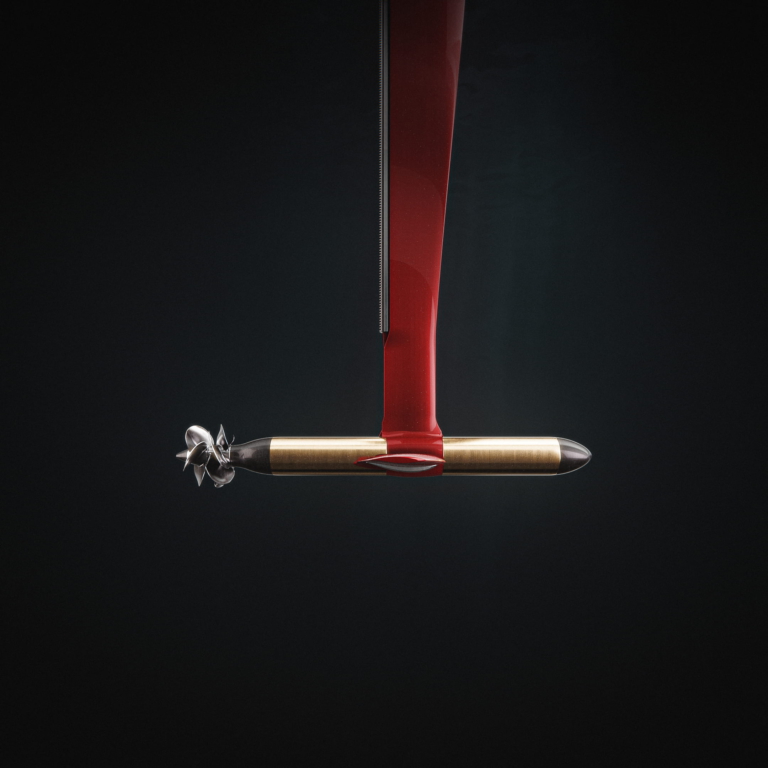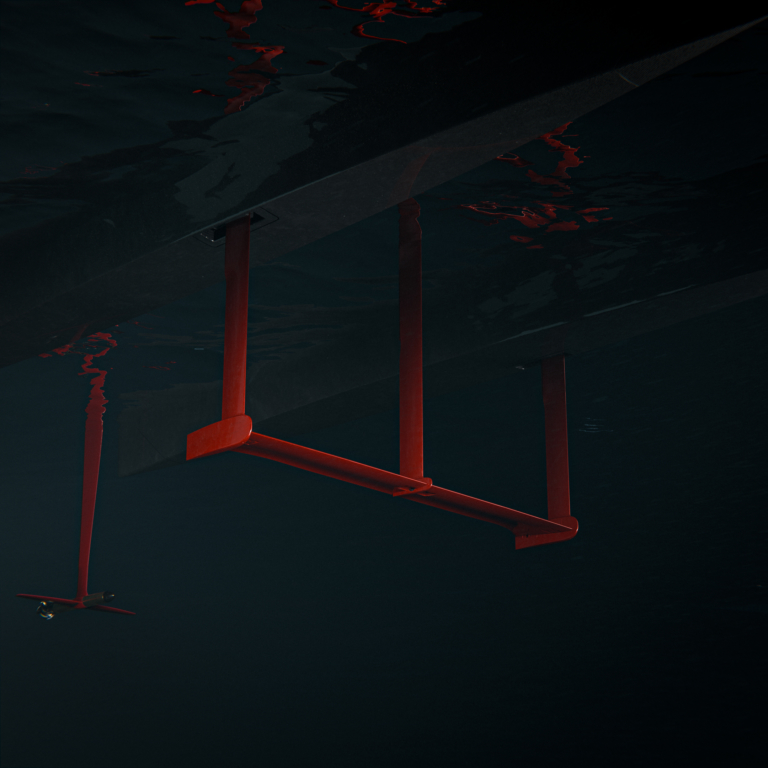Hydrofoiling unlocks performance
Conventional planing electric boats face challenges due to water friction, leading to shorter ranges. In contrast, the C-8 uses hydrofoil technology—wings slung under the hull—to reduce energy usage by 80%. This results in a range that’s 2 to 3 times longer than that of traditional electric boats. Candela’s partnership with the electric car company Polestar allows the C-8 to be DC-charged. Polestar supplies both the batteries and charging for the C-8. Together, this makes extended journeys using battery power feasible for the first time.
The record run was enabled by Northvolt’s mobile battery storage system Voltpack, which was used to DC charge the C-8 during the record run. On the dock stood a 281 kWh Voltpack system, and a Plug DC charger, which enabled rapid charging of the C-8’s battery. The average speed during the 24-hour run was 17 knots, even when accounting for charging breaks. The route comprised a loop between Stockholm and the island of Tynningö, with DC charging after each lap.
The record distance run revealed valuable insights into the potential of Candela’s electric foiling vessels. It also highlighted the potential of a network of DC charging stations:
- The distance traveled in 24 hours equates to driving from Amsterdam to London and back – or between Trondheim and Stavanger.
- The C-8 could have shuttled across the English Channel between Dover and Calais 20 times in 24 hours.
- Traveling at an average speed of 17 knots, including charging breaks, the C-8 could make the journey from Stockholm to Finland in 13 hours. This would outpace the Finland ferry by 3 hours.
- The C-8, running at full speed (27 knots) for most of the journey, consumed 685 kWh of energy. This cost approximately €110-120 in electricity. In contrast, a conventional petrol-powered boat would consume roughly 750 liters of gasoline, costing approximately €1400.
Candela conducted the record run in collaboration with battery maker Northvolt and charging station supplier Plug, to showcase how future DC charging networks for boats could look like in archipelagos and remote coastal areas. Instead of investing heavily in upgrading the local grid, islands can deploy battery systems like Voltpack. This ensures that enough power is available for fast charging.
“With a relatively modest investment, charging stations could be built to fully electrify marine transport in the Stockholm archipelago. For a few hundred million euros, a charging network covering Europe’s coastal passenger transports would become a reality,” states Gustav Hasselskog.
This fall, Candela introduces its new passenger vessel, the 30-person Candela P-12 Shuttle. This vessel can operate on most of the world’s coastal waterways, providing a sustainable and much more cost-effective alternative to today’s fossil-fueled waterborne traffic. This traffic currently accounts for 3% of global GHG emissions.
”We don’t have to wait for tomorrow. We have the technology to shift towards sustainable marine transport now”, concludes Gustav Hasselskog.

 Overview
Overview 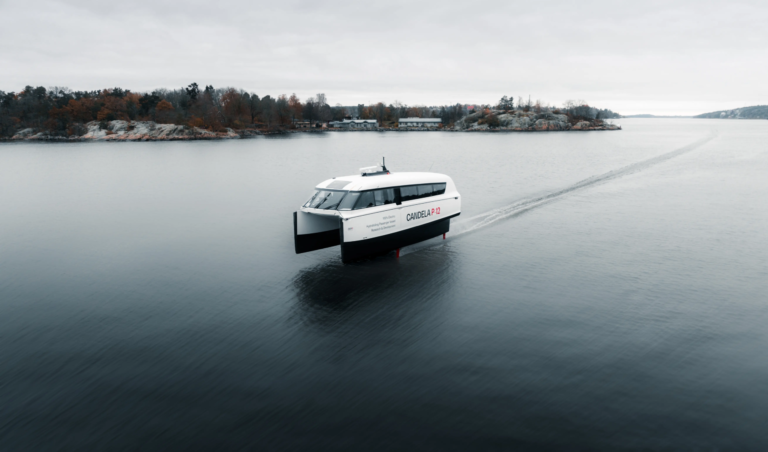 P-12
P-12 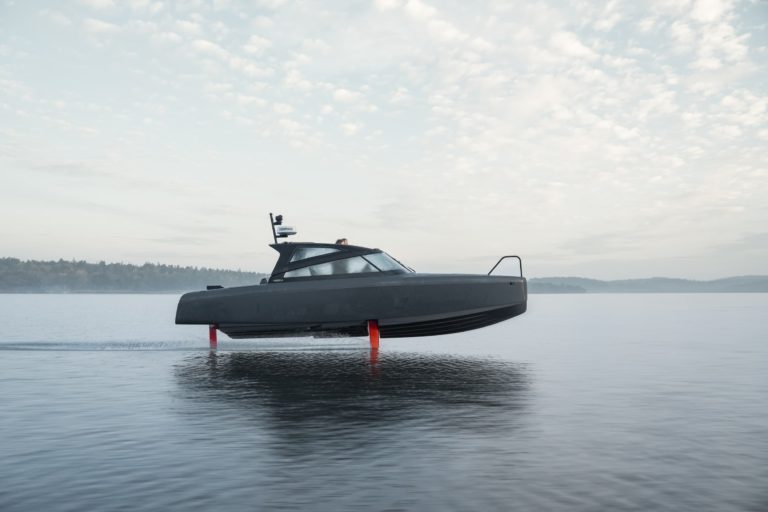
 C-8
C-8 